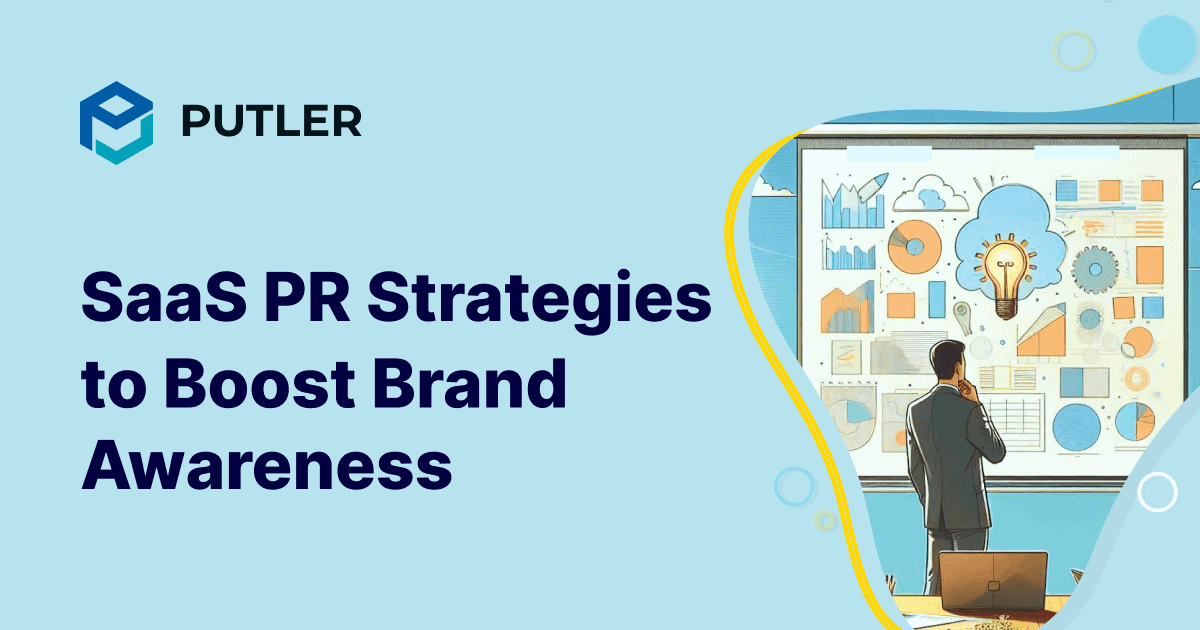Despite the unprecedented reach the internet provides, establishing a SaaS company or launching a new SaaS product is no easy feat.
As a newcomer, you still have to fight an uphill battle of positioning your SaaS brand into the hearts and minds of your customers.
That said, the process of generating brand awareness doesn’t have to be difficult. On the contrary, it can be enjoyable when you know the strategies to use.
To get you started, this article reveals five SaaS PR strategies you can implement today.
Best SaaS PR Strategies in 2025
1. Host webinars
The first SaaS PR strategy you can implement to create brand awareness is to host a webinar.
Webinars have been a thing since before software-as-a-service became a viable business model, and there’s a good reason for their longevity: these virtual events are lead-generating machines.
Don’t believe me? Check out ON24’s 2019 Webinar Benchmarks Report’s finding: a whopping 76% of the marketers surveyed stated that webinars helped them drive more leads.
So what makes webinars so great for boosting brand awareness?
For one thing, they’re useful for positioning your SaaS company as an industry leader. You can use them to provide valuable insights to potential customers while speaking on a wide range of topics. Examples of topics you can cover include industry trends and industry news.
In addition, you can use webinars to educate your target audience about your SaaS product’s features. Your future customers can tune in to see first-hand how your SaaS solution can help to alleviate their pain points.
Adobe is an example of a SaaS brand that does this:
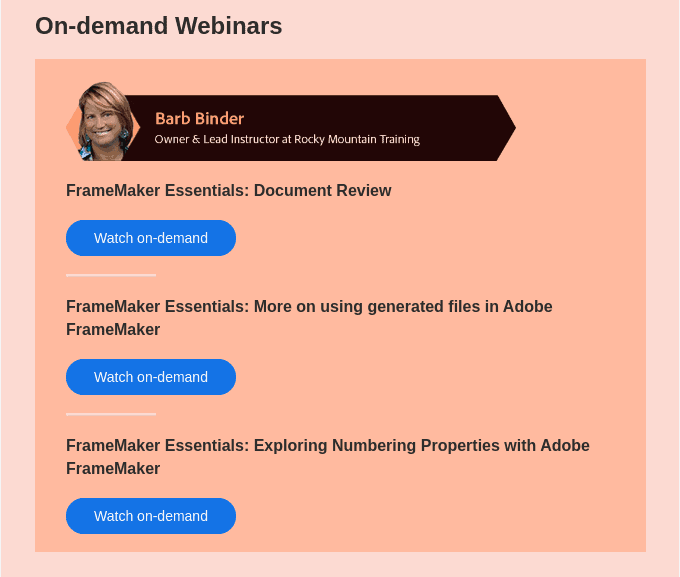
The image above shows that the company has hosted three webinars that teach its customers about its FrameMaker product.
Finally, webinars let you connect with your target market without geographical or time restrictions. This benefit makes them a low-cost but highly effective way to get your SaaS product in front of potential clients.
So much so that even low attendance may not be such a big deal. Why would it be when you can make the webinar available on-demand to customers who failed to attend?
To host your own webinar, start by choosing a topic. Just choose one your target audience will be interested in.
Alternatively, you can conduct social media polls.
Done the right way, you can generate brand awareness for your SaaS and experience perks like higher user growth rates with your webinar.
2. Respond to media queries
Here’s another effective public relations strategy you can implement to create brand awareness for your SaaS company: answer media queries.
Media outlets and journalists are on a never-ending search for compelling stories or insider opinions to include in their news stories.
If they come calling with source requests, becoming one of their credible sources could help to put your brand on the map.
You can sign up on a platform like HARO (Help a Reporter Out) to connect with relevant journalists in the tech industry.
The good thing about these platforms is that this process is automated. HARO, for instance, compiles and sends out daily emails that list journalists and their queries.
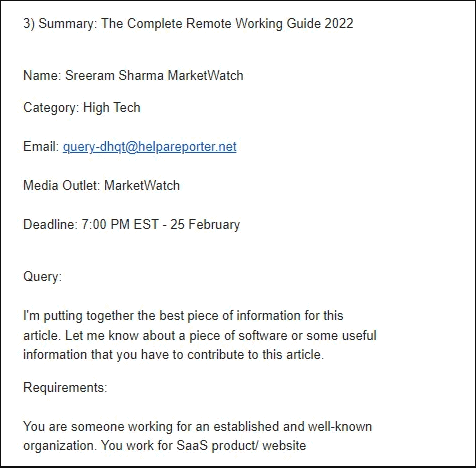
Don’t have HARO or are not in the mood to compete with other businesses seeking the same publicity through the platform? Leverage the services of a reputable agency.
It can just as easily connect you with journalists looking for answers to industry-specific questions. Just make sure you choose an agency that specializes in your niche.
In the same manner, if you hire a SaaS PR agency, the company can easily connect your SaaS company with its network of tech journalists who can give you exposure.
So what makes responding to media queries an effective PR strategy for brand awareness?
Like a webinar, it lets you position your SaaS brand as an industry expert. Your company can provide commentary on industry news while displaying its knowledge of current affairs. Do it enough times and your target audience could come to view your SaaS as a trustworthy source.
Also, media queries provide excellent exposure.
When you answer media queries, you stand to receive brand mentions in industry publications with huge readerships. Essentially, you could potentially widen your SaaS company’s audience base by piggybacking on the publication’s content.
3. Sponsor events
If you know of upcoming industry events, you could sponsor one for your SaaS company. Similar to media queries, this PR strategy is low-effort, but it can provide big returns.
Essentially, sponsorships let you piggyback on an event organizer’s efforts. In return for putting your money down, you can get your logo, messaging, and more in front of your prospective customers–all without writing a line of content.
Event sponsorships also provide opportunities for subtle brand positioning, which can yield better results than if you promote your brand aggressively.
Also, event sponsorships can be excellent for your content marketing efforts, which are also important for PR.
When your company attends the event, you can amass a ton of original content by simply recording what happens.
After recording viral moments, you can publish the videos as content for your online marketing channels, helping your brand awareness efforts there.
Finally, in-person event sponsorships provide an avenue for meeting up, exchanging digital business cards, and interacting with your audience.
You can field questions related to your SaaS products, conduct live demonstrations, gather feedback, and more. The direct contact could result in an increase in your SaaS business’ MRR.
Now how exactly can you sponsor an event?
Here’s an excerpt from Pydata’s prospectus:
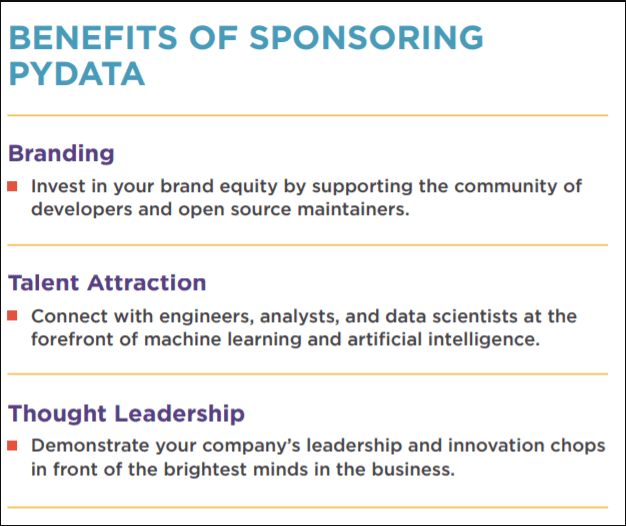
If you don’t find that document online, reach out to the organizer and ask for one. When analyzing the prospectus, pay attention to, not just the specific packages being offered, but also the event’s success metrics.
Look at the audience profile as well. It should match your target audience. The event’s values should also align with yours.
4. Use past successes to create case studies
If you’ve been in business for a while, you may not have to look very far for content to help you create brand awareness. Not when you have a customer base of happy SaaS product users.
In other words, your company’s past successes are fertile ground for case studies.
Case studies can be an excellent source of content for creating awareness for your SaaS brand for two reasons:
- They let you showcase your product’s features;
- They’re useful for highlighting the results it has achieved for current clients or customers.
The second point is key because it can give your product the social proof needed to convert undecided prospects into paying customers.
So how does it work?
Encourage these customers to provide specifics when telling their success stories. The more details they provide, the better and more believable they’ll be.
Once you have quotable statements from the clients, you can either write the case study in-house or enlist a SaaS SEO agency to do it for you.
SaaS company, Zapier, applies this strategic PR approach regularly.
Throughout its existence, the company has published several case studies on its website (see the image below):
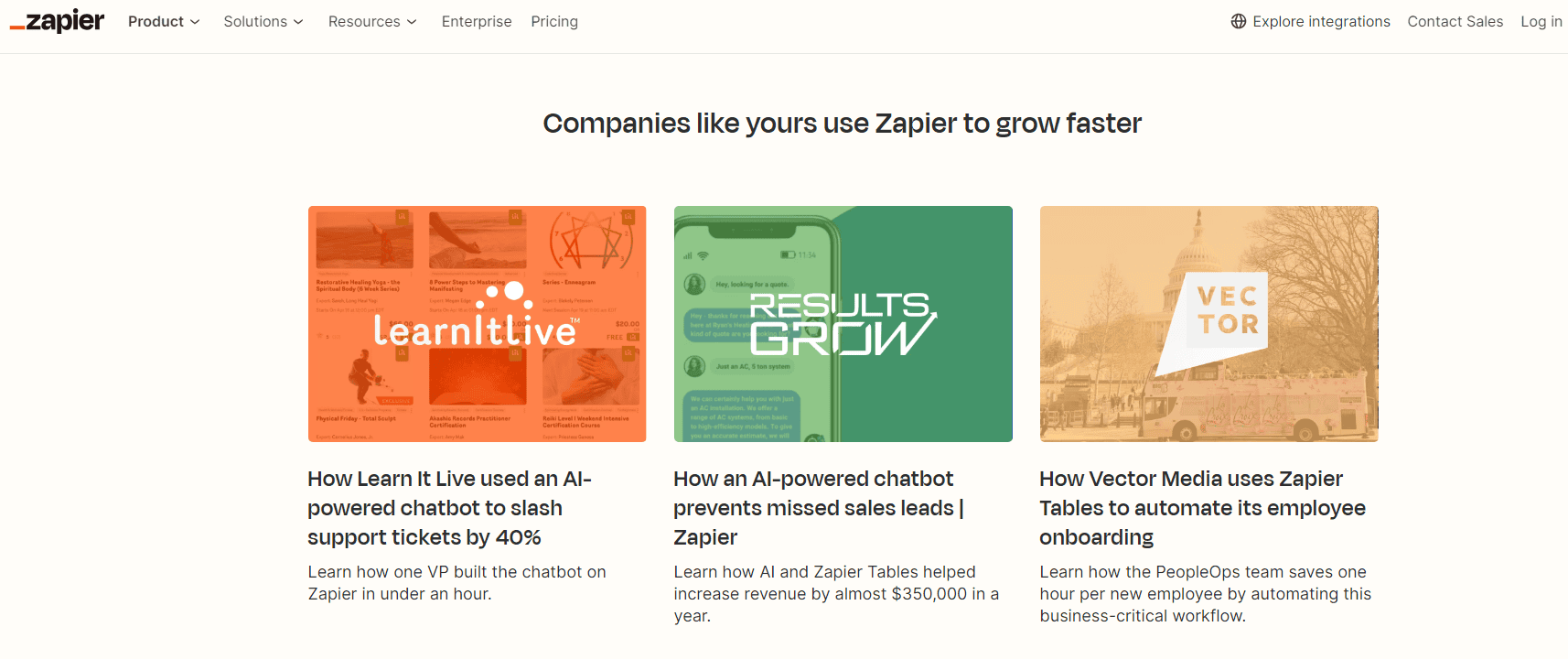
Each highlights how the company’s product has helped a customer achieve their business goals.
5. Leverage email marketing
While implementing the other PR strategies on my list, don’t sleep on email marketing.
Not only is it useful for building brand awareness in its own right, but it can also help amplify the other strategies I’ve discussed and more.
Let’s address the latter point first.
Remember the webinar PR strategy? You can use email to generate buzz for an upcoming webinar. The same goes for event sponsorships and case study announcements.
Email marketing can also augment your content marketing strategies on other channels.
You can use it to announce the publication of valuable content on your social media accounts, for example. This PR strategy will ensure your web assets receive a steady stream of organic traffic.
As for how email can help you build brand awareness in its own right, it offers a ton of versatility.
For example, you can use email marketing to announce new SaaS product features or updates, as ClickUp does in the image below:
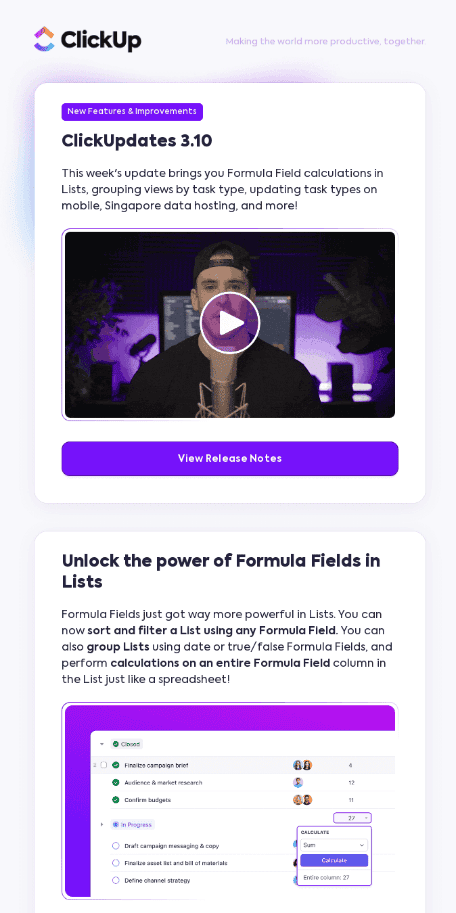
Email marketing is also excellent for maintaining audience engagement on your subscriber list.
Similarly, email marketing can be the catalyst for higher customer retention rates and new sign-ups.
When leveraging email marketing as a SaaS PR strategy, you want to use a mixture of email content.
Before sending, segment your subscriber base according to specific criteria using email marketing software. This way, you can further ensure the emails you send will capture your target audience’s interest.
Conclusion
Promoting brand awareness for a SaaS product or business can be easy when you know how.
Use webinars to position your SaaS brand as an industry leader.
Answer media queries to appear in major publications and build strong relationships with media outlets.
Sponsor events for visibility and a chance to meet with customers.
Write case studies to build trust and credibility.
And leverage email marketing, not just to increase brand awareness, but also to amplify your other PR efforts.
If you adopt one or more of the SaaS PR strategies above, your SaaS business will build brand awareness and thrive.

